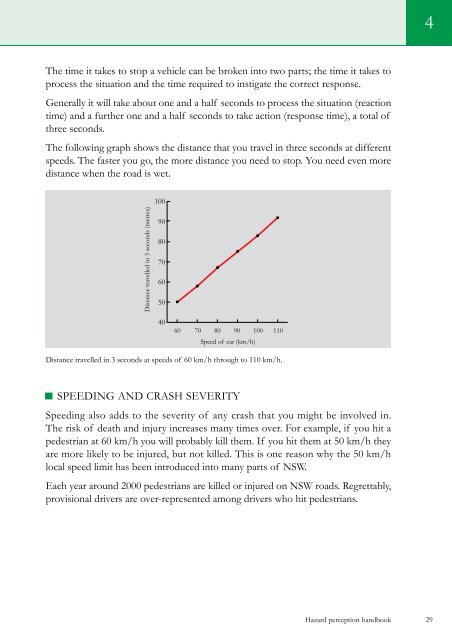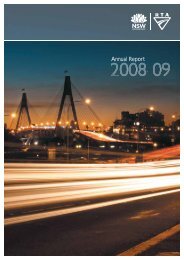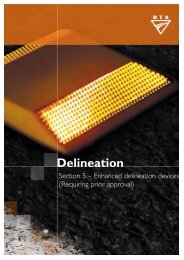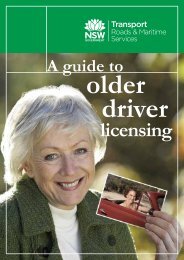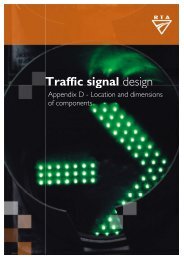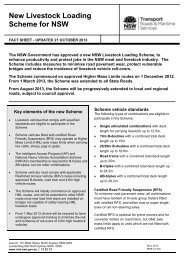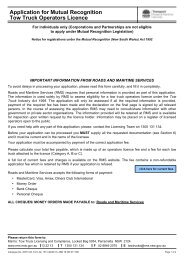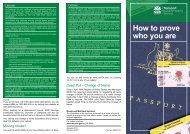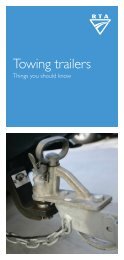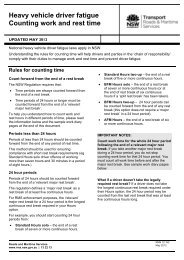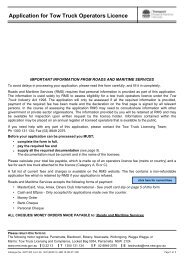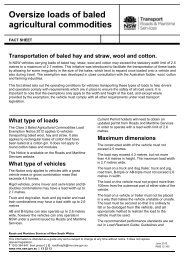Hazard perception handbook - RTA
Hazard perception handbook - RTA
Hazard perception handbook - RTA
Create successful ePaper yourself
Turn your PDF publications into a flip-book with our unique Google optimized e-Paper software.
The time it takes to stop a vehicle can be broken into two parts; the time it takes to<br />
process the situation and the time required to instigate the correct response.<br />
Generally it will take about one and a half seconds to process the situation (reaction<br />
time) and a further one and a half seconds to take action (response time), a total of<br />
three seconds.<br />
The following graph shows the distance that you travel in three seconds at different<br />
speeds. The faster you go, the more distance you need to stop. you need even more<br />
distance when the road is wet.<br />
Distance travelled in 3 seconds (metres)<br />
100<br />
90<br />
80<br />
70<br />
60<br />
50<br />
40<br />
60 70 80 90 100 110<br />
Speed of car (km/h)<br />
distance travelled in 3 seconds at speeds of 60 km/h through to 110 km/h.<br />
SPEEdING ANd CRASH SEvERITy<br />
Speeding also adds to the severity of any crash that you might be involved in.<br />
The risk of death and injury increases many times over. for example, if you hit a<br />
pedestrian at 60 km/h you will probably kill them. If you hit them at 50 km/h they<br />
are more likely to be injured, but not killed. This is one reason why the 50 km/h<br />
local speed limit has been introduced into many parts of NSW.<br />
Each year around 2000 pedestrians are killed or injured on NSW roads. Regrettably,<br />
provisional drivers are over-represented among drivers who hit pedestrians.<br />
4<br />
<strong>Hazard</strong> <strong>perception</strong> <strong>handbook</strong> 29


